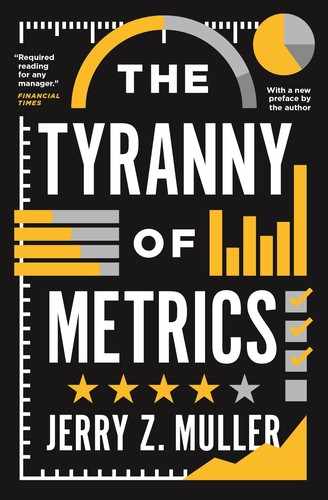The drive to institute metrics often arises from the best of intentions, as a purported solution to real problems. And in some cases, as we’ll see, it really does fulfill its promise to provide such solutions, or at least contributes to solving problems. But after decades of experience with the negative effects of metrics, as metric dysfunction threatens to cascade into yet more institutions, we should be able to anticipate the recurrent flaws. Here’s a list to help identify and remember them. Of course, while we may distinguish them for purposes of analysis, these flaws often overlap in the real world.
Let’s begin with problems of the distortion of information.
Measuring the most easily measurable. There is a natural human tendency to try to simplify problems by focusing on the most easily measureable elements.1 But what is most easily measured is rarely what is most important, indeed sometimes not important at all. That is the first source of metric dysfunction.
Closely related is measuring the simple when the desired outcome is complex. Most jobs have multiple responsibilities and most organizations have multiple goals. Focusing measurement on just one responsibility or goal often leads to deceptive results.
Measuring inputs rather than outcomes. It is often easier to measure the amount spent or the resources injected into a project than the results of the efforts. So organizations measure what they’ve spent, rather than what they produce, or they measure process rather than product.
Degrading information quality through standardization. Quantification is seductive, because it organizes and simplifies knowledge. It offers numerical information that allows for easy comparison among people and institutions.2 But that simplification may lead to distortion, since making things comparable often means that they are stripped of their context, history, and meaning.3 The result is that the information appears more certain and authoritative than is actually the case: the caveats, the ambiguities, and uncertainties are peeled away, and nothing does more to create the appearance of certain knowledge than expressing it in numerical form.4
Campbell’s Law and Goodhart’s Law are warnings about the inevitable attempts to game the metric when much is at stake. Gaming the metrics takes a variety of forms.
Gaming through creaming. This takes place when practitioners find simpler targets or prefer clients with less challenging circumstances, making it easier to reach the metric goal, but excluding cases where success is more difficult to achieve.
Improving numbers by lowering standards. One way of improving metric scores is by lowering the criteria for scoring. Thus, for example, graduation rates of high schools and colleges can be increased by lowering the standards for passing. Or airlines improve their on-time performance by increasing the scheduled flying time of their flights.
Improving numbers through omission or distortion of data. This strategy involves leaving out inconvenient instances, or classifying cases in a way that makes them disappear from the metrics. Police forces can “reduce” crime rates by booking felonies as misdemeanors, or by deciding not to book reported crimes at all.
Cheating. One step beyond gaming the metrics is cheating—a phenomenon whose frequency tends to increase directly with the stakes of the metric in question. As we’ll see, as the No Child Left Behind Act raised the stakes for schools of the test scores of their pupils, teachers and principals in many cities responded by altering students’ answers on the test.
